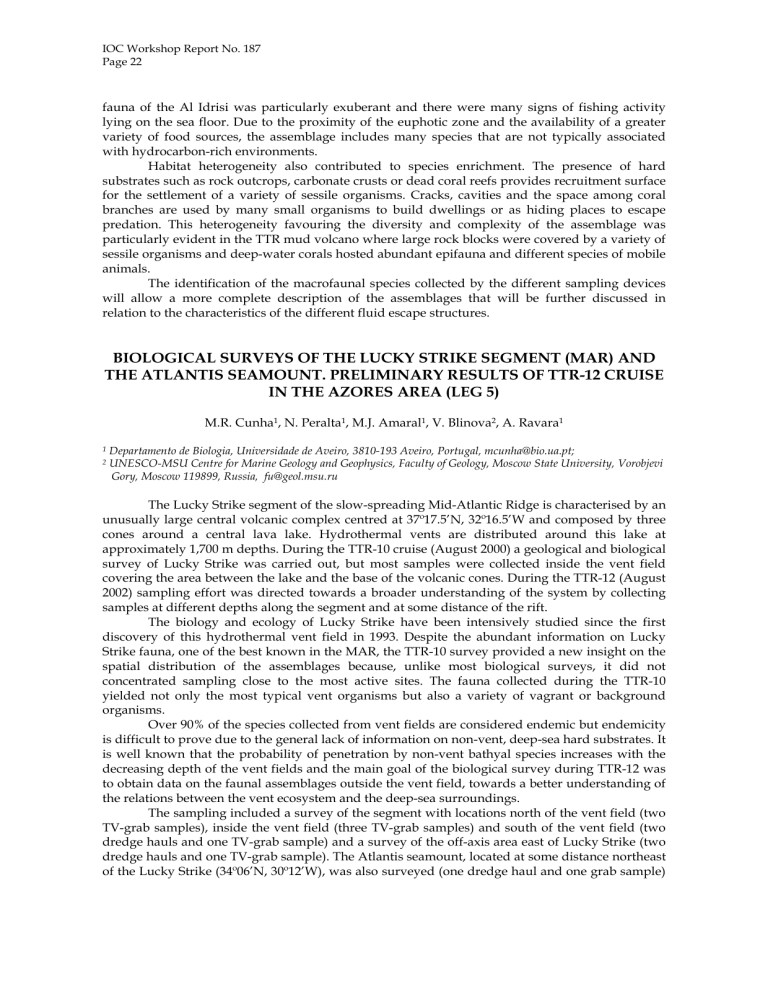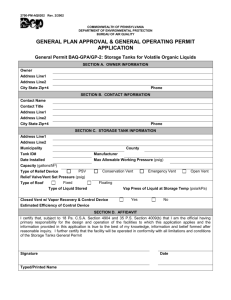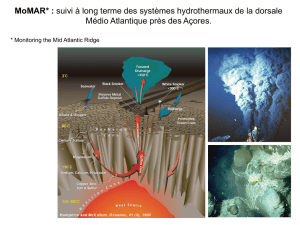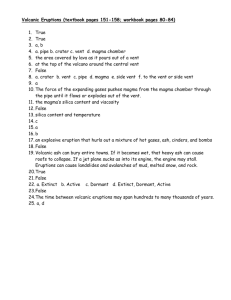fauna of the Al Idrisi was particularly exuberant and there... lying on the sea floor. Due to the proximity of...

IOC Workshop Report No. 187
Page 22 fauna of the Al Idrisi was particularly exuberant and there were many signs of fishing activity lying on the sea floor. Due to the proximity of the euphotic zone and the availability of a greater variety of food sources, the assemblage includes many species that are not typically associated with hydrocarbon-rich environments.
Habitat heterogeneity also contributed to species enrichment. The presence of hard substrates such as rock outcrops, carbonate crusts or dead coral reefs provides recruitment surface for the settlement of a variety of sessile organisms. Cracks, cavities and the space among coral branches are used by many small organisms to build dwellings or as hiding places to escape predation. This heterogeneity favouring the diversity and complexity of the assemblage was particularly evident in the TTR mud volcano where large rock blocks were covered by a variety of sessile organisms and deep-water corals hosted abundant epifauna and different species of mobile animals.
The identification of the macrofaunal species collected by the different sampling devices will allow a more complete description of the assemblages that will be further discussed in relation to the characteristics of the different fluid escape structures.
BIOLOGICAL SURVEYS OF THE LUCKY STRIKE SEGMENT (MAR) AND
THE ATLANTIS SEAMOUNT. PRELIMINARY RESULTS OF TTR-12 CRUISE
IN THE AZORES AREA (LEG 5)
M.R. Cunha 1 , N. Peralta 1 , M.J. Amaral 1 , V. Blinova 2 , A. Ravara 1
1 Departamento de Biologia, Universidade de Aveiro, 3810-193 Aveiro, Portugal, mcunha@bio.ua.pt;
2 UNESCO-MSU Centre for Marine Geology and Geophysics, Faculty of Geology, Moscow State University, Vorobjevi
Gory, Moscow 119899, Russia, fu@geol.msu.ru
The Lucky Strike segment of the slow-spreading Mid-Atlantic Ridge is characterised by an unusually large central volcanic complex centred at 37º17.5’N, 32º16.5’W and composed by three cones around a central lava lake. Hydrothermal vents are distributed around this lake at approximately 1,700 m depths. During the TTR-10 cruise (August 2000) a geological and biological survey of Lucky Strike was carried out, but most samples were collected inside the vent field covering the area between the lake and the base of the volcanic cones. During the TTR-12 (August
2002) sampling effort was directed towards a broader understanding of the system by collecting samples at different depths along the segment and at some distance of the rift.
The biology and ecology of Lucky Strike have been intensively studied since the first discovery of this hydrothermal vent field in 1993. Despite the abundant information on Lucky
Strike fauna, one of the best known in the MAR, the TTR-10 survey provided a new insight on the spatial distribution of the assemblages because, unlike most biological surveys, it did not concentrated sampling close to the most active sites. The fauna collected during the TTR-10 yielded not only the most typical vent organisms but also a variety of vagrant or background organisms.
Over 90% of the species collected from vent fields are considered endemic but endemicity is difficult to prove due to the general lack of information on non-vent, deep-sea hard substrates. It is well known that the probability of penetration by non-vent bathyal species increases with the decreasing depth of the vent fields and the main goal of the biological survey during TTR-12 was to obtain data on the faunal assemblages outside the vent field, towards a better understanding of the relations between the vent ecosystem and the deep-sea surroundings.
The sampling included a survey of the segment with locations north of the vent field (two
TV-grab samples), inside the vent field (three TV-grab samples) and south of the vent field (two dredge hauls and one TV-grab sample) and a survey of the off-axis area east of Lucky Strike (two dredge hauls and one TV-grab sample). The Atlantis seamount, located at some distance northeast of the Lucky Strike (34º06’N, 30º12’W), was also surveyed (one dredge haul and one grab sample)
IOC Workshop Report No. 187
Page 23 and provided another example of bathyal hard substrate for further faunistic comparisons. Deep towed TV was used to obtain video footages of the top of the Atlantis seamount and of the off-axis summit east of Lucky Strike and provided information on the megafauna distribution.
The grab and dredge samples yielded over 1,000 specimens that were picked from the surface of the sediments and rocks, recovered from rock washings and sorted from sieved sediments. The specimens were ascribed to about 150 different taxa but many organisms are not yet fully identified to species due to the large number of groups that need taxonomic expertise.
A preliminary overview of the data allows the following remarks:
1) From the 50 species collected inside the vent, none occurred at the off-axis area or at
Atlantis, seven were found at other locations on the segment (mainly in the north) and at least six other species are known from non-vent bathyal areas. These non-endemic species are mainly polychaetes and small crustaceans (isopods and amphipods).
2) The off-axis summit east of Lucky Strike shows more similarity to the Atlantis seamount (at least six species in common) than to the segment locations. This similarity is also evident from the video footages that show, in both locations, a megafaunal assemblage dominated by large suspension feeders like sponges, corals, gorgonians and anemones.
3) The species richness of the samples collected inside the vent field and at the Atlantis seamount was comparable but the vent assemblage was dominated by small sized detritus-feeders
(mainly crustaceans) and showed paucity in large suspension-feeders. Small crustaceans, like tanaids, isopods, amphipods and cumaceans accounted for 75% of the species richness and 70% of the abundance of the vent samples, while sponges and cnidarians accounted for 40% of the species and 60% of the abundance of the seamount samples.
These are preliminary remarks on the samples collected and cannot be generalised without further investigations.




